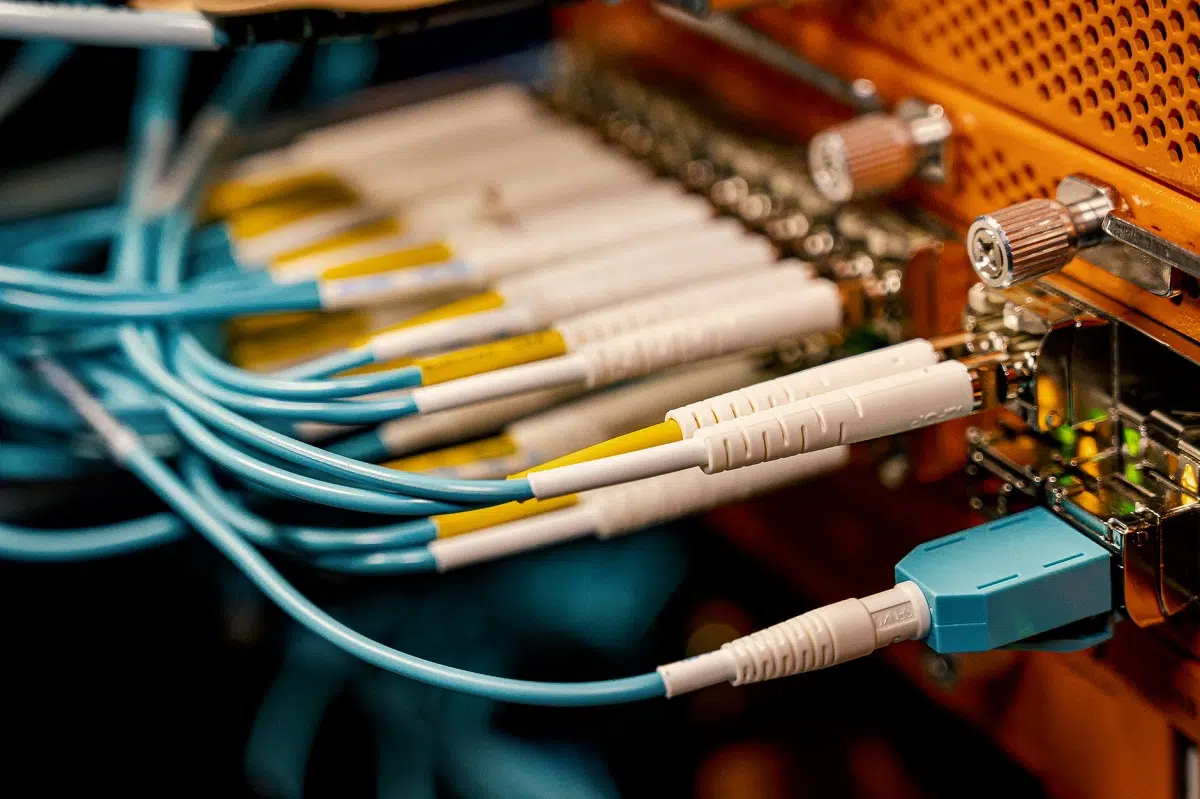Everything You Need To Know About Fiber To Ethernet Converters And How It Can Benefit Your Network
Fiber-optic cables are revolutionizing the way we transmit data. They offer higher bandwidth, lower latency, and greater reliability than traditional copper cables. But what happens when you need to connect a device with an Ethernet port to your fiber network? That’s where fiber-to-ethernet converters come in handy. In this blog post, we will explore everything you need to know about these devices and how they can benefit your network. We’ll take a look at the types of converters available, their features, and how they can help improve your network performance.
What is a fiber to Ethernet converter?
A fiber to Ethernet converter is a device that allows you to connect an Ethernet cable to a device that only has a fiber optic connection. This can be useful if you want to connect a device that only has a fiber optic connection to a network that only has an Ethernet connection.
There are two main types of fiber to Ethernet converters: active and passive. Active converters contain electronics that regenerate the signal, while passive converters simply convert the signal from one form to another without any amplification.
Fiber to Ethernet converters can be used in a number of different ways. For example, they can be used to connect a computer to a network router or switch, or they can be used to connect two devices together directly.
Fiber optic cables are becoming increasingly popular as they offer many benefits over traditional copper cables. They are much thinner and lighter, which makes them easier to install and less likely to cause damage. Fiber optic cables also have much higher bandwidth than copper cables, which means they can carry more data.
How does a fiber to Ethernet converter work?
A fiber media converter is a device that is used to connect a fiber optic cable to an Ethernet network. The converter converts the optical signals into electrical signals that can be sent over the Ethernet network.
Fiber to Ethernet converters are used in a variety of applications, such as connecting fiber optic cable to an Ethernet network in order to provide high-speed internet access, or connecting two Ethernet networks together using fiber optic cable. Fiber to Ethernet converters can also be used in security systems, as they can transmit data over long distances without being intercepted.
There are two main types of fiber to Ethernet converters: active and passive. Active converters contain electronic components that amplify the signal, while passive converters do not contain any electronic components and only convert the signal. Active converters are more expensive than passive converters, but they offer higher performance and are typically used in applications where data needs to be transmitted over long distances.
The benefits of using a fiber to Ethernet converter
A fiber to Ethernet converter can offer a number of benefits for your network. Perhaps the most obvious benefit is the increased speed that you will enjoy by making the switch from an older, slower technology to a newer, faster one. With a converter in place, you can expect to see significant increases in both the upload and download speeds that you experience. This can be extremely beneficial if you frequently transfer large files or stream media content.
Another big benefit of using a fiber to Ethernet converter is the increased security that it can offer. Fiber optic cables are much more difficult to tap into than traditional copper cables, so upgrading to a fiber-based network can help to deter would-be hackers and data thieves. Additionally, fiber networks are less susceptible to interference from things like electromagnetic fields, meaning that your data will be better protected against outside threats.
Finally, fiber-based networks tend to be much more reliable than their copper counterparts. This means that you can expect fewer dropped connections and less downtime overall. If your business relies heavily on its network for things like VoIP calls or online transactions, this increased reliability can be crucial.
How to choose the right fiber to Ethernet converter for your needs
Fiber-to-Ethernet converters are one of the most important pieces of equipment in any fiber optic network. They provide the link between two different types of networks, and allow for the transfer of data at high speeds. There are many different types and models of fiber-to-Ethernet converters on the market, so it is important to choose the right one for your needs.
To select the best fiber-to-Ethernet converter for your application, you need to consider a few factors:
- Speed: How fast do you need the converter to be? The speed is typically measured in megabits per second (Mbps). Higher speeds are available, but they will cost more.
- Protocol: What type of Ethernet protocol do you need? The most common types are 10/100Base-T and Gigabit Ethernet.
- Connectors: What type of connectors does the converter use? The most common type is LC, but there are also ST, FC, and SC connectors. Make sure that the converter you choose has the right type of connector for your network equipment.
- Distance: How far will the signal need to travel? Fiber optic cable comes in different grades, which are designed for different distance ranges. Choose a converter that is rated for the distance that you need to cover.
- Compatibility: Will the converter work with your existing network equipment? Make sure that you check
Troubleshooting tips for your fiber to Ethernet converter
If you’re experiencing problems with your fiber to Ethernet converter, there are a few troubleshooting tips that can help. First, check to see if the converter is properly plugged into an electrical outlet and your network router or switch. If it is, then unplug the converter and plug it back in again. This can sometimes reset the connection and fix any issues.
If you’re still having problems, try connecting the converter directly to your computer instead of going through a router or switch. This will help determine if the issue is with the converter or with your network equipment.
Lastly, if you’re still having trouble, contact the manufacturer of your converter for further assistance. They may be able to provide additional troubleshooting tips or walk you through a more advanced reset process.
Conclusion
In conclusion, fiber to ethernet converters are a great way to upgrade your network and add additional flexibility when connecting with different types of devices. These units are easy to install and configure, allowing you to quickly gain access to higher speeds of up to 1 Gbps. By deploying these cost-effective solutions, businesses can get more out of their existing networks while also improving overall performance and scalability.

